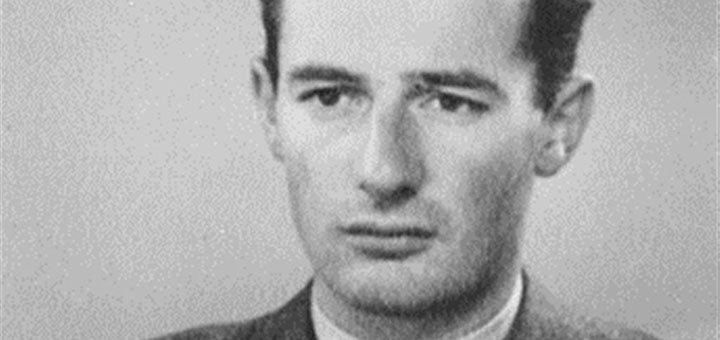Why was Wallenberg arrested by the Soviets? One reason might have been that Iver Olsen, the American who recruited him, was also an agent for the U.S. Office of Strategic Services, the forerunner of the CIA. The Soviets were well aware of this and very paranoid. A Soviet spy who had infiltrated the Red Cross in Budapest had observed Wallenberg closely. He found Wallenberg’s humanitarian motives simply incomprehensible. He concluded that Wallenberg was a double agent, working for the Americans and the Germans. The Soviets did not want to deal with such a dangerous unknown when they marched in to occupy Budapest.
Wallenberg trusted the Communists only slightly more than the Nazis. But he allowed himself to fall into their hands because he hoped that the Soviets would allow him to stay in Hungary to take part in the postwar revitalization of its society.
At the time he was abducted, Wallenberg’s heroism was unknown to the world at large. Sweden is Russia’s near neighbor and the Swedish government was far more interested in maintaining good relations with the Soviet Union than in finding out what had happened to a Swedish citizen employed by the United States. In April 1945, Averell Harriman, acting on behalf of the U.S. State Department, offered the Swedish government American help in making inquiries about Wallenberg’s fate. His offer was curtly declined. It was not until June 1946, under pressure from the Swedish public and the Foreign Office, that the Swedish minister to Moscow finally requested an interview with Soviet dictator Joseph Stalin to discuss Wallenberg. Though the Swedish Foreign Office had evidence that Wallenberg was imprisoned in Moscow, the minister volunteered that he personally believed that the great humanitarian had been killed in Budapest. Offered an easy out, Stalin did not disagree.
That conspiracy of silence continued for eleven years. Wallenberg’s immediate family never gave up hope of locating him and from the moment he disappeared pressed their case relentlessly. It was only in 1957, during the political thaw following Stalin’s death, that the Soviets broke their official silence on Wallenberg’s fate. They admitted that he had survived the war, and even that Stalin had been holding him prisoner at the time of the 1946 meeting with the Swedish minister. But they claimed that Wallenberg—a healthy thirty-two-year-old man at the time he was abducted—had died in prison of a heart attack two years later. That remained the official line until the fall of 2000.
For thirty-five years, Wallenberg’s story remained unknown outside Sweden. It was not until 1980 that Elenore Lester, in a now-famous article for the New York Times Magazine, brought Wallenberg’s story to the attention of the world. The following year, President Reagan made Raoul Wallenberg an honorary citizen of the United States—an honor previously extended only to Winston Churchill.
The delayed recognition of Wallenberg’s achievement has made the mystery of his fate all the more poignant. Despite Russia’s attempt to close the case, those working on behalf of Wallenberg’s legacy continue to press for information about him. Evidence that he was alive during many of the last fifty-six years is compelling and impossible to dismiss. Only reports in the international media of Wallenberg sightings by former Soviet prisoners in the gulag kept the case before the Swedish public.
In 2000 the American Jewish Committee published a pamphlet by William Korey that meticulously summarizes the history of the Wallenberg case. Near the end of this frustrating and depressing tale, Korey explains how the Russian-Swedish commission established in 1990 at the behest of Guy von Dardel, Wallenberg’s half brother, to scour Russian prison archives for information on Wallenberg was thwarted by constantly changing Russian politics and the ultimate impossibility of gaining access to key KGB files.
Korey believes that the American government could yet make a difference. “The fate of Wallenberg has been discussed between the United States and Russia at lower diplomatic levels and largely in the context of the Helsinki process, which is designed to inform the public of gross human rights violations, not to produce an immediate substantive result,” Korey writes. “America’s unique ‘honorary citizen’ deserves more.”
In April 2001 the Raoul Wallenberg Committee of the United States published an eight-page “Chronology of the Raoul Wallenberg Case.” Included in this chronology are details of every reported sighting of Wallenberg and encounter with him in Russia by his fellow prisoners since 1945. The last was in a prison camp 150 miles from Moscow in 1987.
At the beginning of the twenty-first century it seems an indisputable fact that the Russian government continues to stand between the world and the truth about what happened to Raoul Wallenberg after January 17, 1945.
As the final chapter on Wallenberg’s fate continues to be written, recognition of what he achieved in Hungary continues to grow. In Israel, he is honored at Yad Vashem—Jerusalem’s memorial to Holocaust victims—as the most outstanding of the “Righteous Gentiles.”
In 1985, U.S. ambassador to the United Nations Jeane Kirkpatrick, speaking on the fortieth anniversary of Raoul Wallenberg’s arrest, said Wallenberg “has become more than a man, more even than a hero. He symbolizes a central conflict of our age, which is the determination to remain human and caring and free in the face of tyranny. What Raoul Wallenberg represented in Budapest was nothing less than the conscience of the civilized world.”

In 2015 a representative of the Wallenberg family asked the Swedish government to issue a death certificate for Raoul Wallenberg. The government published notices seeking information about his whereabouts. No responses were received. On October 26, 2016, Sweden declared Raoul Wallenberg dead, seventy-one years after his disappearance. The official date of his death is formally listed as July 31, 1952, five years after the last credible evidence that he was alive at the end of July, 1947.

